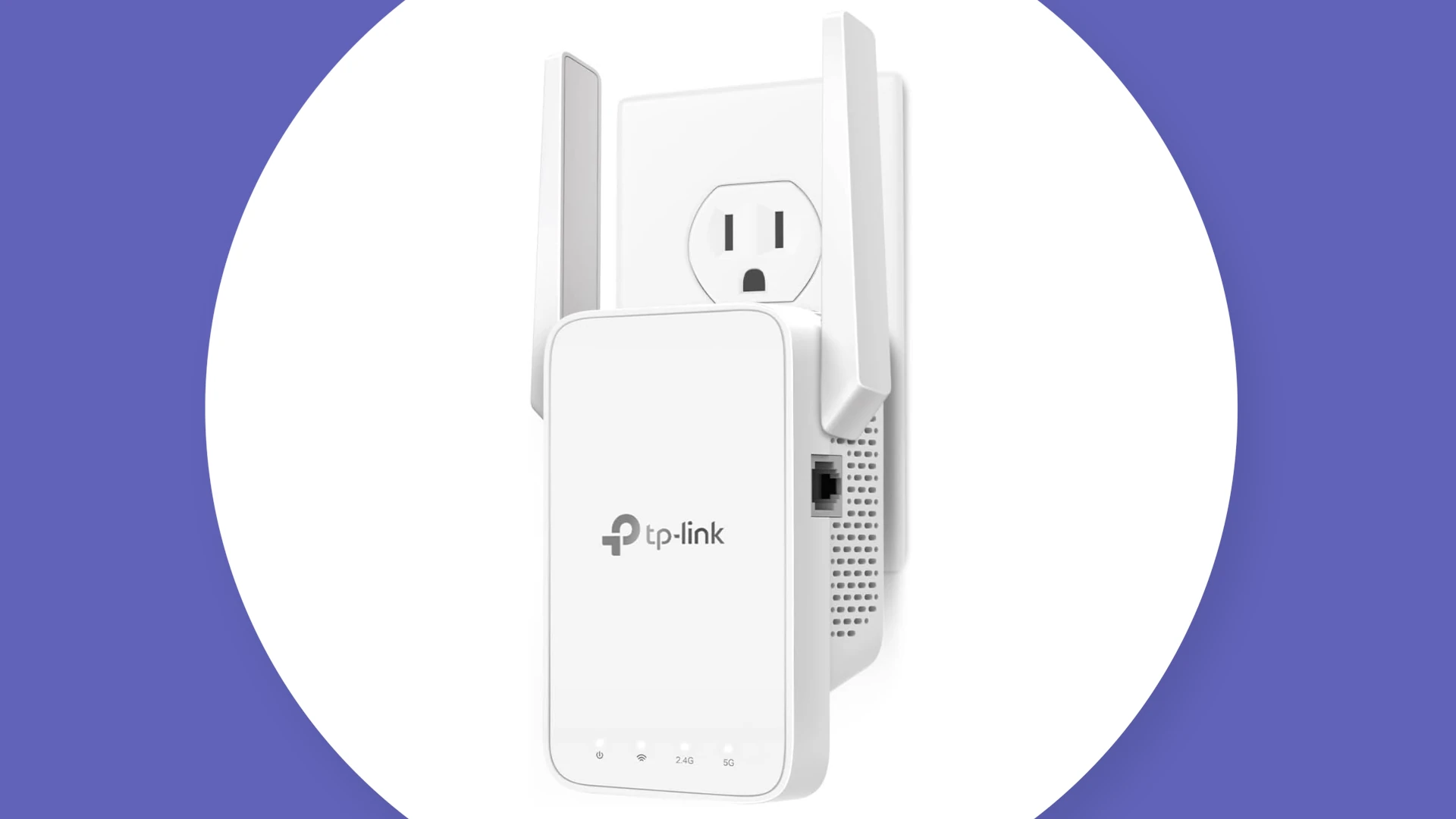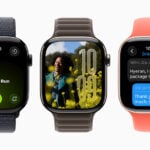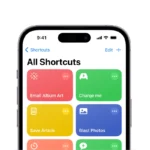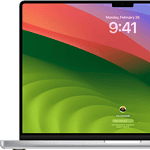Signal issues are one of the most frustrating tech problems, especially in areas where your phone regularly drops calls or Wi-Fi just can’t seem to reach that one stubborn corner of your home. Signal boosters and extenders offer a direct fix to those problems by taking the weak signal you already have—cellular or Wi-Fi—and making it usable again. Whether you’re working from a remote cabin, living in a basement apartment, or trying to stream videos from the backyard, the right booster can make all the difference. But with so many options on the market, choosing the right one depends on your specific needs, coverage area, and the type of signal you’re trying to enhance.
Below is a carefully curated list of the best signal boosters and Wi-Fi extenders available today. These models were selected for their performance, reliability, coverage, and ease of installation.
Best Signal Boosters and Extenders (2025)

Each of these devices was selected not just for name recognition, but for real-world performance across different scenarios. Whether you’re fixing a weak home Wi-Fi signal, ensuring uninterrupted service on cross-country road trips, or boosting mobile data in a rural area, one of these options is built for your situation. Coverage, carrier compatibility, and installation ease were key factors in these rankings, so you can feel confident selecting a model that fits your setup.
Details On The Top Signal Boosters
Cell signal boosters can solve weak reception problems in homes, offices, or vehicles. These devices capture existing cellular signals, amplify them, and rebroadcast stronger signals to your devices. Our team tested leading models to identify the most effective signal boosters that provide reliable connections for calls, texts, and data in areas with poor coverage.
TP-Link AC1200 WiFi Extender
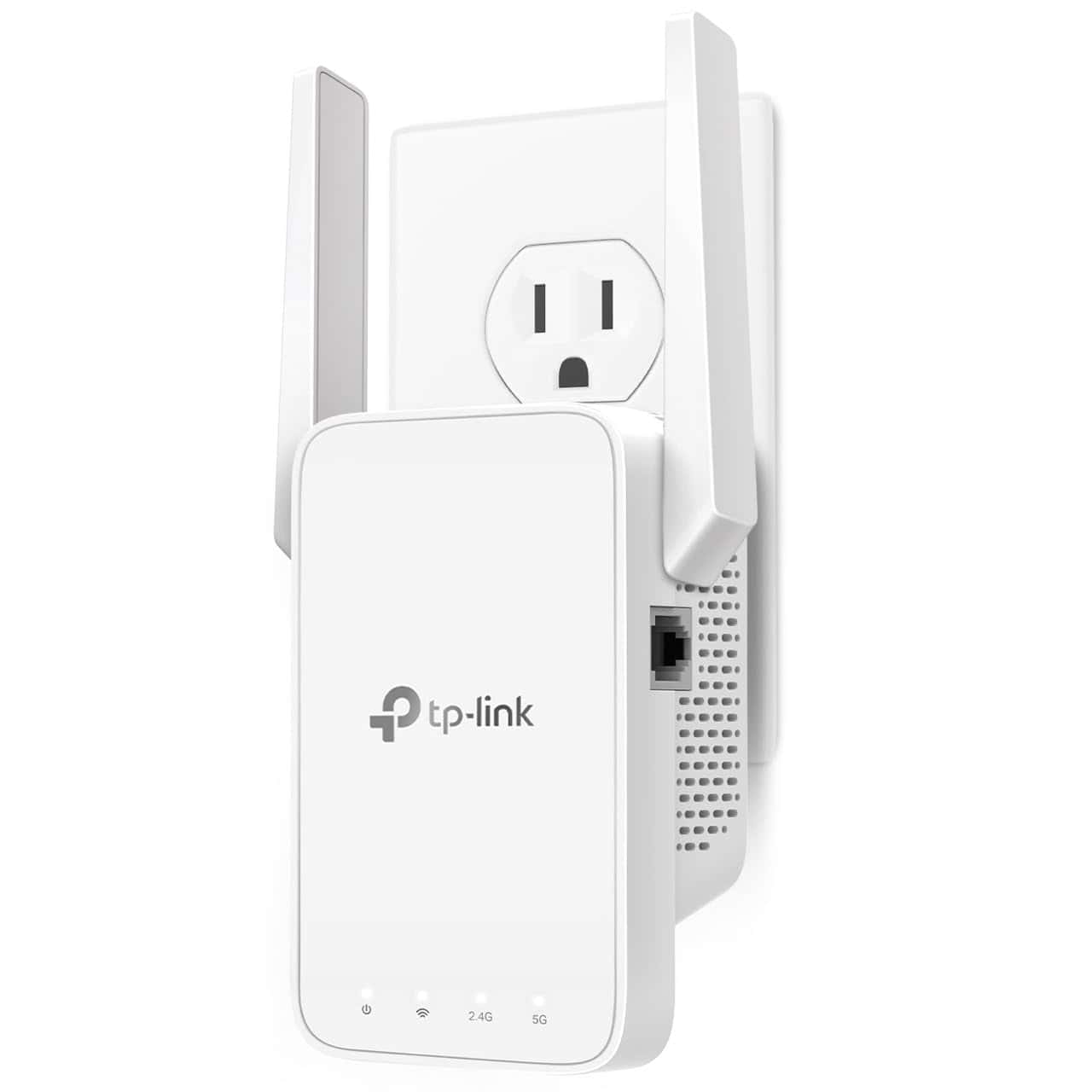
The TP-Link AC1200 is worth buying for anyone struggling with dead zones as it effectively extends WiFi coverage up to 1500 square feet while supporting up to 30 devices.
Pros
- Easy setup with user-friendly app interface
- Dual-band technology delivers speeds up to 1.2Gbps
- Includes Ethernet port for wired connectivity options
Cons
- May require strategic placement for optimal performance
- Single Ethernet port limits wired device connections
- Some users report occasional connection drops
This WiFi extender eliminates frustrating dead zones by boosting signals to areas your main router can’t reach. The dual-band technology (2.4GHz and 5GHz) ensures faster speeds up to 1.2Gbps, making it suitable for streaming, gaming, and everyday browsing. Its compact design plugs directly into a wall outlet without taking up valuable space.
Setup takes minutes using the TP-Link Tether app. Users can monitor device connections and signal strength through the intuitive interface. The RE315 also features OneMesh compatibility, allowing it to work seamlessly with other TP-Link OneMesh routers like the Archer A7 or AX21 to create a whole-home mesh network.
The built-in Ethernet port adds versatility by connecting wired devices directly to the extender. This port can also function as an access point, converting wired internet connections into wireless networks. For optimal results, placement is key – installing the extender halfway between the router and dead zone typically yields the best performance.
Compatibility isn’t an issue with the RE315. It works with all WiFi-enabled devices and any router or access point. Coverage extends to outdoor areas too, making it perfect for smart home devices like security cameras or outdoor lighting that require stable connections.
Smart LED indicators help users determine the best location by showing signal strength. When properly positioned, this extender maintains consistent speeds, though performance naturally decreases somewhat compared to being directly connected to the main router.
Amazboost Cell Phone Booster

The Amazboost Cell Phone Booster offers reliable signal enhancement for homes with weak reception, making it a worthwhile investment for those struggling with dropped calls and slow data speeds.
Pros
- Amplifies signal up to 100X for multiple devices
- Compatible with all major US carriers
- Covers up to 2,500 square feet depending on outside signal strength
Cons
- Requires roof installation that takes 1-2 hours
- Performance limited by nearby trees
- Coverage area varies significantly based on existing signal quality
This signal booster works with all major US carriers including Verizon, AT&T, T-Mobile, and US Cellular. It supports 3G, 4G LTE, and 5G signals, though 5G functionality requires that your area already offers 5G service on existing 4G frequency bands.
Installation requires some effort as the outdoor antenna needs proper positioning. The package includes the booster unit, directional antenna, and necessary cables. Users should note that tall trees within 100 feet of the house may interfere with signal reception unless the antenna is mounted at 60-80% of the tree height.
The device’s performance varies based on your existing outdoor signal. With just 1-2 bars (-100dBm), expect coverage of about 400 square feet. Better outdoor signal strength of 3-4 bars (-90dBm) extends coverage to approximately 1,300 square feet, while optimal conditions with 5 bars (-80dBm) can reach the full 2,500 square feet.
FCC approved with automatic gain adjustment, this booster requires no carrier registration or subscription fees. The one-year warranty provides peace of mind for buyers concerned about long-term reliability. For small homes, apartments, or single rooms with poor reception, this signal booster offers a practical solution to connectivity problems.
weBoost Drive Reach Overland Signal Booster

The weBoost Drive Reach Overland stands out as a worthwhile investment for adventurers who need reliable cell service in remote areas during off-road journeys.
Pros
- Compatible with all major US carriers and supports 5G technology
- Rugged design specifically built for challenging outdoor conditions
- Versatile mounting options for different vehicle types
Cons
- Higher price point compared to standard boosters
- Installation may require some technical know-how
- Bulky antenna might not appeal to everyone aesthetically
The weBoost Drive Reach Overland tackles a common problem for outdoor enthusiasts – losing cell signal when venturing off the beaten path. This signal booster offers powerful 50dB gain amplification designed specifically for trucks, Jeeps, SUVs, and other off-road vehicles. Its rugged construction withstands harsh environments while maintaining connectivity in areas where signals typically fail.
Setup flexibility makes this device particularly valuable for different vehicle types. The mounting bracket accommodates various installation preferences without compromising performance. Users report significant improvements in remote areas where they previously had no service at all. The booster works with all major carriers including Verizon, AT&T, T-Mobile, and US Cellular, making it a universal solution regardless of provider.
Made in the USA and FCC approved, the Drive Reach Overland comes with a two-year warranty and US-based customer support. These factors provide peace of mind for buyers making a substantial investment in their connectivity needs. The device supports multiple phones simultaneously, allowing everyone in the vehicle to benefit from improved signal strength during adventures. Despite its premium price, those who regularly explore remote locations will find the reliable connection worth the cost.
Phonetone Cell Signal Booster
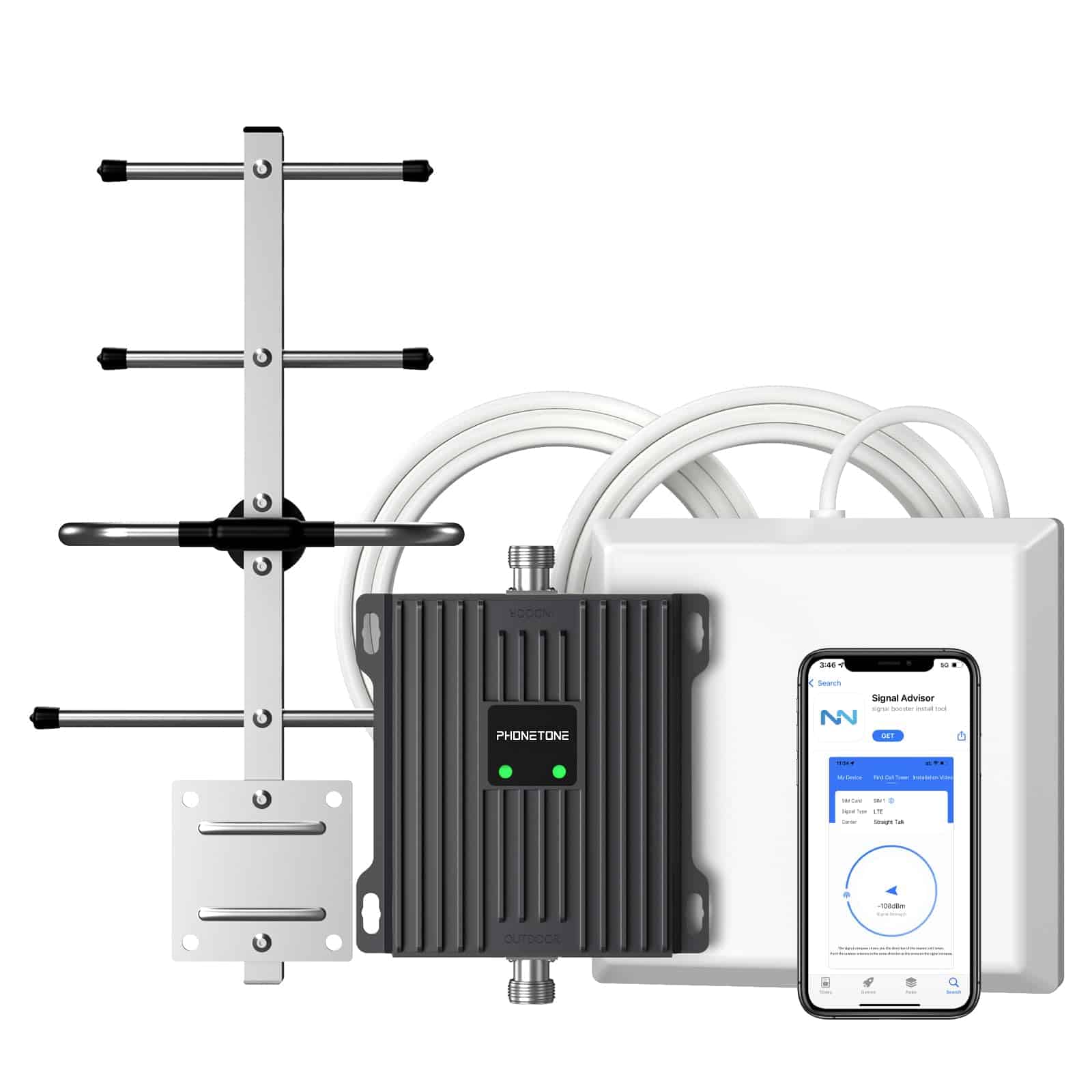
The Phonetone Signal Booster delivers reliable cellular connectivity for Verizon and AT&T users struggling with weak signals in homes or offices.
Pros
- Covers up to 4,500 square feet with improved signal
- Compatible with both 4G LTE and certain 5G signals
- Includes smart automatic gain control for optimal performance
Cons
- Only works with Verizon and AT&T networks
- Limited to specific frequency bands (12, 13, and 17)
- Somewhat expensive investment compared to other connectivity solutions
This dual-band signal amplifier effectively addresses poor reception issues in signal-challenged areas. Users typically see a significant improvement, often going from 0-1 bars to 3-5 bars of signal strength. The device supports multiple users simultaneously, making it ideal for households or small offices where several people need reliable connections.
Installation proves straightforward with the included directional antenna that users can point toward the nearest cell tower. The package includes everything needed for a DIY setup, eliminating the need for professional installation costs. The automatic gain control feature intelligently adjusts based on existing signal strength, optimizing performance without manual adjustments.
FCC certification provides assurance of safety and compliance, while the comprehensive warranty package offers peace of mind. The 30-day money-back guarantee allows risk-free testing, and the 5-year manufacturer warranty exceeds industry standards. For homes situated in cellular “dead zones” or buildings with signal-blocking materials like metal roofs, this booster represents a practical solution to maintain essential connectivity.
Xilkoze WiFi Extender
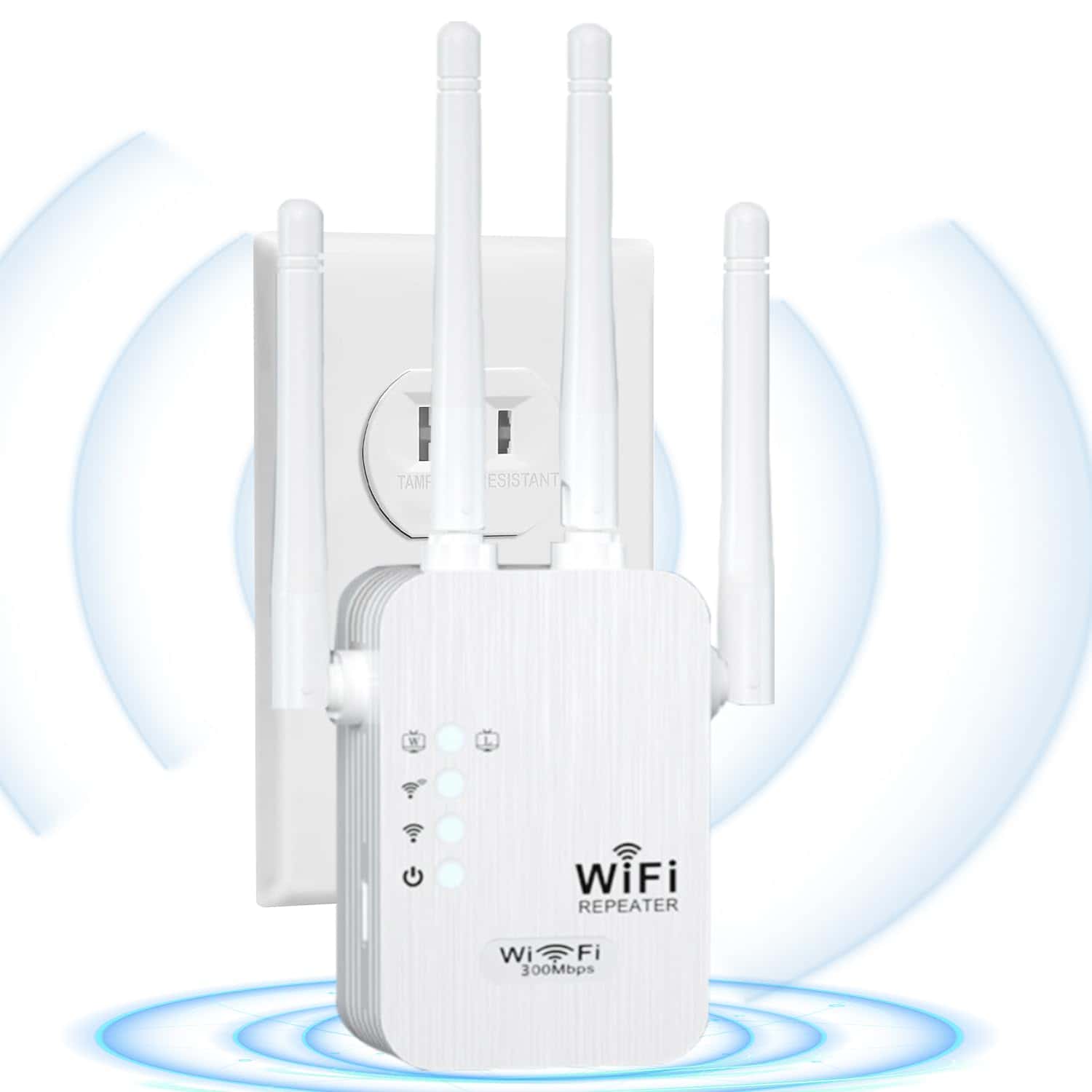
The Xilkoze WiFi Extender effectively eliminates dead zones with impressive coverage and easy setup, making it a solid choice for most homes needing better signal reach.
Pros
- Covers up to 9800 square feet for whole-home coverage
- Supports 40+ devices simultaneously
- Simple plug-and-play setup process
Cons
- Only operates on 2.4GHz frequency band
- May require optimal placement for best results
- Some users might need technical support during initial setup
This compact WiFi extender measures just 4.7 x 3.9 x 3.5 inches, making it easy to place anywhere in your home. It provides speeds up to 300Mbps on the 2.4GHz band, which works well for standard browsing and streaming needs. The device features two Ethernet ports, allowing you to connect wired devices directly to the network.
Setting up the Xilkoze extender takes only minutes. Users connect to the extender’s default network, access the setup page, and select their home network. After entering the password and completing configuration, the extended network becomes available throughout the home. This straightforward process appeals to users who want better coverage without technical complications.
Security remains a priority with this device. It supports WPA/WPA2 protocols to keep your connection safe from unauthorized access. The signal reaches previously problematic areas like basements, garages, and outdoor spaces. Many users report success with streaming in previously dead zones. For homes with multiple smart devices across different floors, this extender provides the consistent connection needed for smooth operation.
Fululuer WiFi Extender

The Fululuer WiFi Extender offers excellent value for anyone struggling with dead zones in their home, delivering impressive coverage and straightforward setup at a reasonable price point.
Pros
- Covers up to 8,470 square feet with support for 45+ devices
- Dual-mode functionality (Repeater/AP) with Ethernet port
- Simple setup process with clear instructions
Cons
- May require strategic placement for optimal performance
- Compact size means smaller antennas than premium models
- Limited to 300Mbps maximum speed
This compact signal booster addresses a common household frustration – weak WiFi signals in certain areas. With four antennas packed into a space-efficient design, the Fululuer extender can cover an impressive 8,470 square feet. Users won’t need technical expertise to get it running, as the included instructions guide them through a quick setup process.
Speed capabilities top out at 300Mbps, which proves sufficient for most online activities including streaming, gaming, and video calls. The device offers versatility through its dual operating modes. Repeater mode extends an existing wireless network, while AP mode transforms a wired connection into a wireless access point via the built-in Ethernet port.
Security features deserve mention as the extender supports WPA/WPA2 protocols to safeguard network traffic. This protection helps prevent unauthorized access and data theft – particularly important for homes with multiple connected devices. At just 4.6 ounces and measuring roughly 7×4×2 inches, it won’t create an eyesore wherever it’s placed.
Network stability stands out as a major benefit according to user feedback. The device effectively penetrates obstacles that typically block signals – thick walls, appliances, and cement floors. For households with internet service that works well near the router but suffers in distant rooms, this extender provides a cost-effective solution without requiring a complete network overhaul.
HiBoost Hero Cell Phone Booster
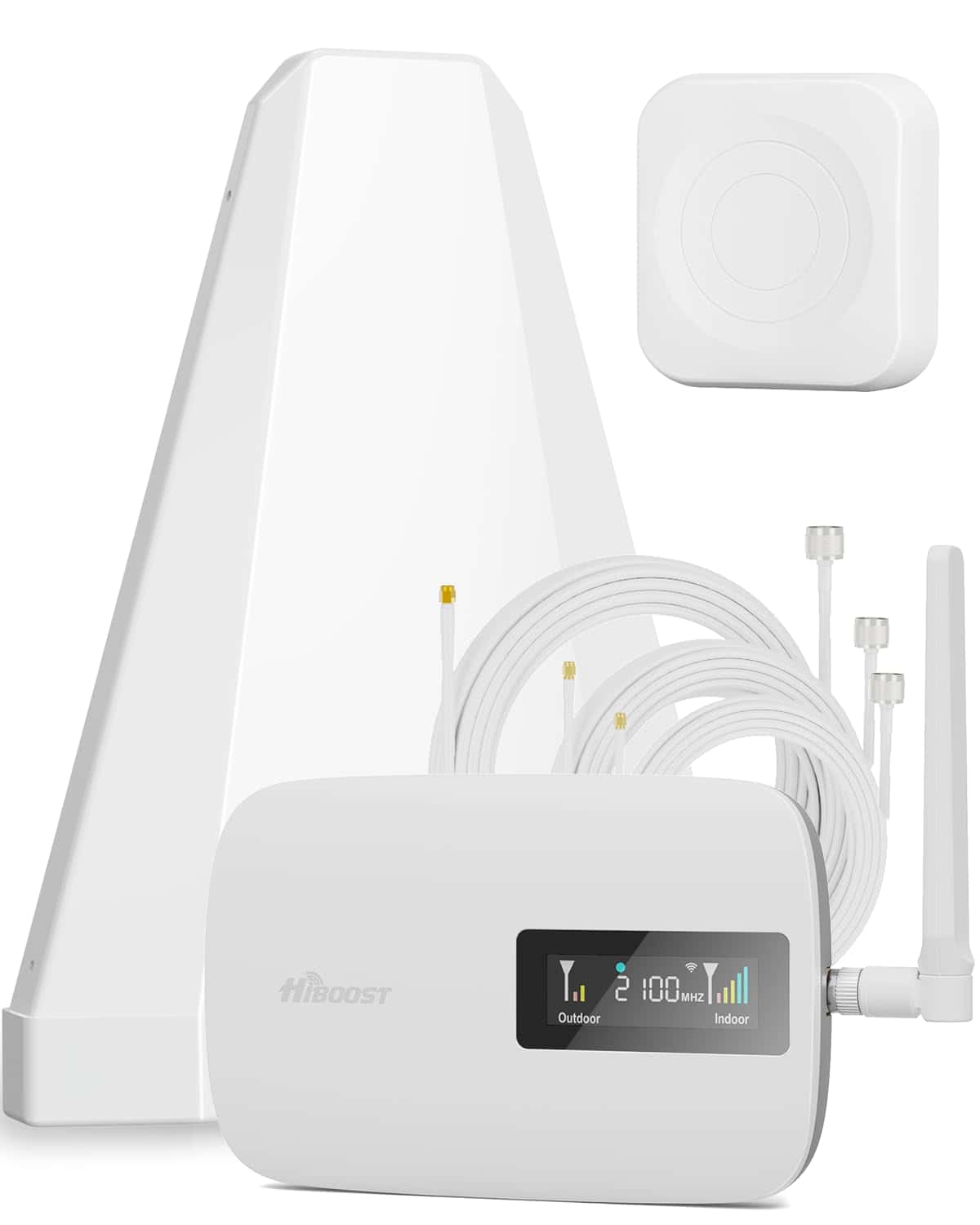
The HiBoost Hero offers solid performance for homes with weak cellular signals, providing up to 3,000 square feet of improved coverage for multiple carriers.
Pros
- Covers large areas up to 3,000 square feet
- Compatible with 5G and includes two antenna options
- Features app support for easier installation and monitoring
Cons
- Only effective if outdoor signal exists (1-2 bars minimum)
- Doesn’t work with hotspot devices
- Limited to specific frequency bands
The HiBoost Hero tackles a common household frustration – poor indoor cell reception. With 65dB of gain, it significantly improves call quality and data speeds in spaces where signal normally struggles to penetrate. Users particularly value its performance in metal buildings, remote areas, and homes located in signal-challenged locations.
Versatility stands out as a key strength. The package includes two indoor antenna options to match different needs – a panel antenna for maximizing coverage area and a whip antenna for mobility. This flexibility helps users customize their setup based on their specific environment. The system works with major US carriers including T-Mobile, AT&T, and Verizon.
Installation proves simpler than expected for most users. The companion app guides placement of the directional outdoor antenna to find the strongest signal source. A thoughtful window cable allows for testing different positions without drilling holes. The LCD screen on the booster unit further simplifies setup by providing visual feedback. For those needing help, the company offers live tech support to troubleshoot installation challenges.
The system’s future-proofing with 5G compatibility represents good value considering the three-year warranty. While it requires at least some outdoor signal to function properly, users in partial dead zones report substantial improvements in call reliability and data speeds. For homes suffering from consistent signal problems, the HiBoost Hero delivers a practical solution without requiring monthly fees.
ANNTLENT Cell Phone Signal Booster
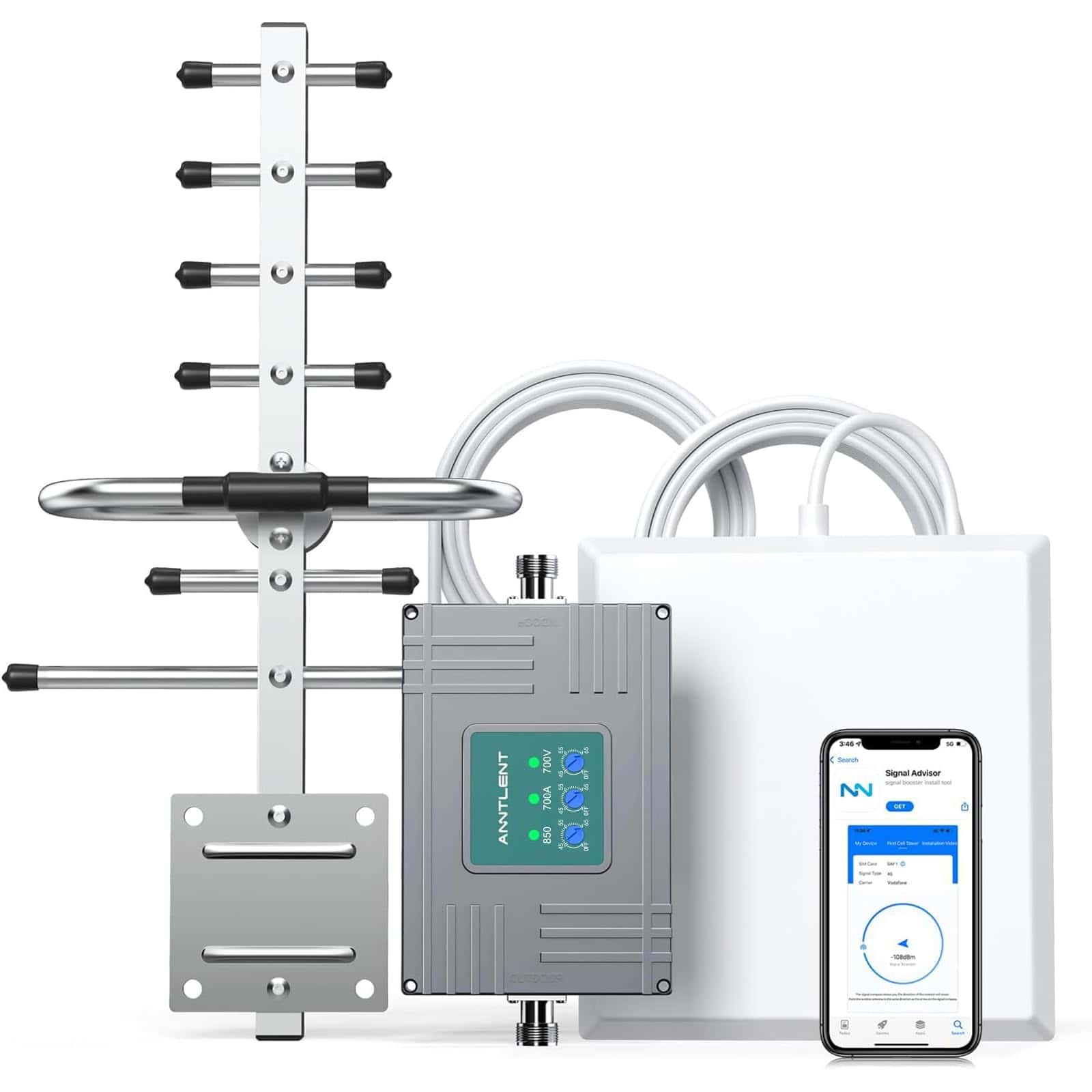
The ANNTLENT signal booster provides a solid solution for poor cell reception in rural areas or buildings with weak signals by amplifying coverage for multiple carriers across specific frequency bands.
Pros
- Supports multiple carriers including Verizon, AT&T, and T-Mobile
- Companion app helps locate cell towers for optimal installation
- Covers up to 4,500 square feet in ideal conditions
Cons
- Only works with specific frequency bands (5, 12, 13, 17)
- Performance heavily depends on existing signal strength
- Installation requires careful positioning of external antenna
This signal booster focuses on enhancing 4G LTE and 5G signals for the major US carriers. Users should verify their carrier’s frequency bands before purchase to ensure compatibility. The device works best when there’s at least minimal signal outside the building to amplify.
Setting up the ANNTLENT booster is made easier with their dedicated app that helps locate the nearest cell tower. This feature eliminates much of the guesswork during installation. The package includes all necessary components: the booster unit, directional outside antenna, inside panel antenna, and various cables for mounting options.
The built-in Automatic Level Control (ALC) technology constantly monitors signal strength and adjusts performance accordingly. This prevents system shutdowns when external signals fluctuate. Users report significantly improved call quality and data speeds, particularly in rural areas where service is typically spotty. While the coverage area may not reach the full 4,500 square feet in all situations, most customers experience substantial improvements throughout their homes or small offices.
FCC approval provides reassurance about the device’s compliance with regulations. Additionally, the 3-year warranty and 30-day money-back guarantee offer excellent buyer protection. For those struggling with poor cell reception who don’t want to switch carriers, this booster represents a worthwhile investment despite its somewhat specific band limitations.
HMTYQNB AC2100 WiFi Extender
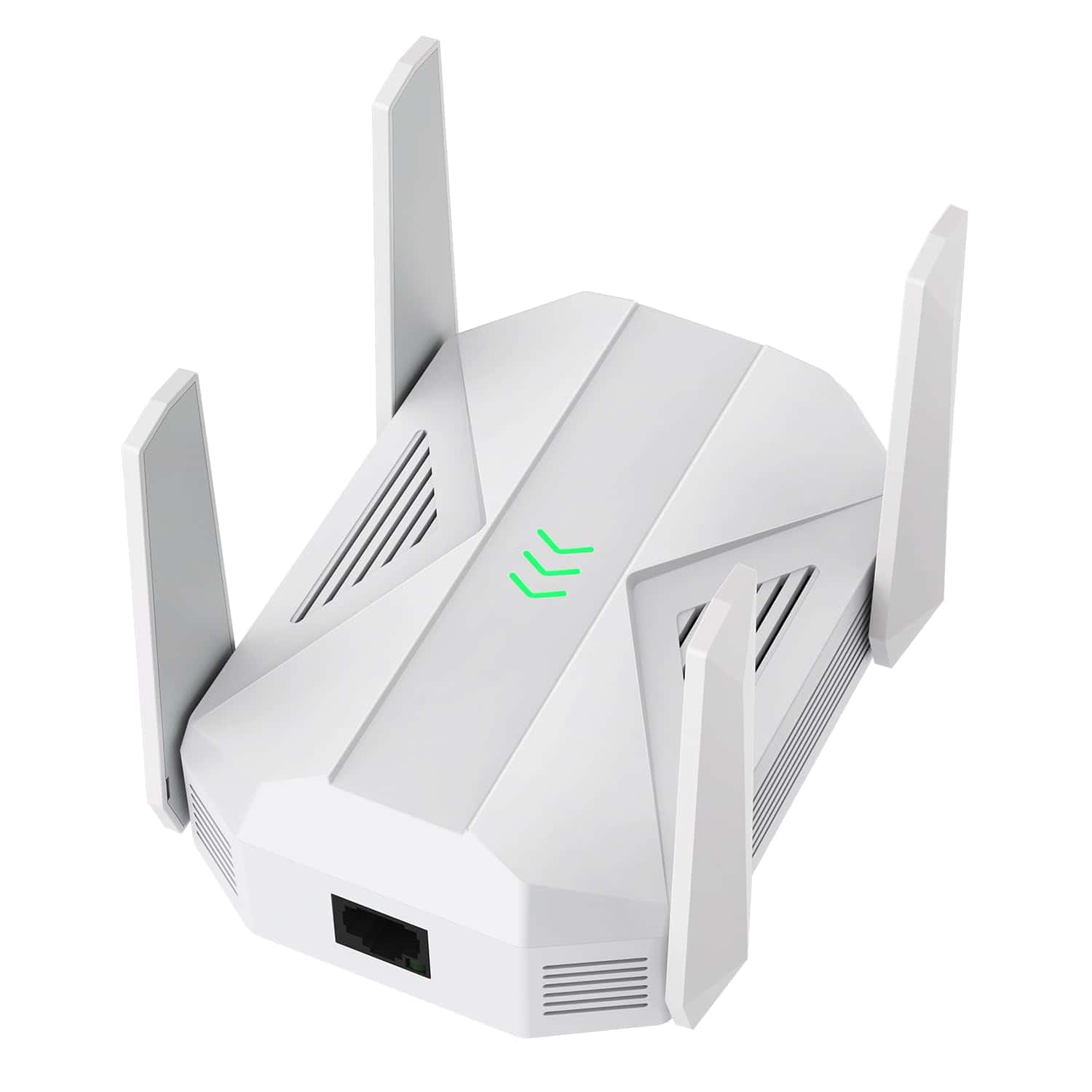
The HMTYQNB AC2100 WiFi Extender offers exceptional coverage and performance for anyone struggling with dead zones in their home network.
Pros
- Covers up to 12,888 square feet with strong signal
- Dual-band technology delivers speeds up to 2100Mbps
- Connects 100+ devices without performance degradation
Cons
- May require strategic placement for optimal results
- Larger than some competing extenders
- No dedicated app functionality
The HMTYQNB WiFi extender stands out with its impressive AC2100 dual-band technology. This device delivers 1800Mbps on the 5.8GHz band and 300Mbps on the 2.4GHz band, providing enough bandwidth for smooth streaming and gaming throughout a home. Users with large houses or problematic dead zones will appreciate how the four high-performance antennas can push coverage to nearly 13,000 square feet.
Connection stability remains a key strength even when numerous devices access the network simultaneously. The extender can handle over 100 connected devices without compromising speed or reliability, making it perfect for technology-heavy households. Its compatibility with various WiFi standards (IEEE 802.11ac/a/n/g/b) ensures that smartphones, smart TVs, gaming consoles, and home assistants all work seamlessly.
Gamers and streaming enthusiasts will appreciate the included Gigabit Ethernet port. This wired connection option provides ultra-fast speeds for devices that benefit from a direct connection. The extender also includes robust security protocols (WEP/WPA/WPA2) to protect the network from unauthorized access. Heat management features prevent performance degradation during extended use, which adds to the device’s reliability for continuous operation.
SNDcellup Cell Phone Booster
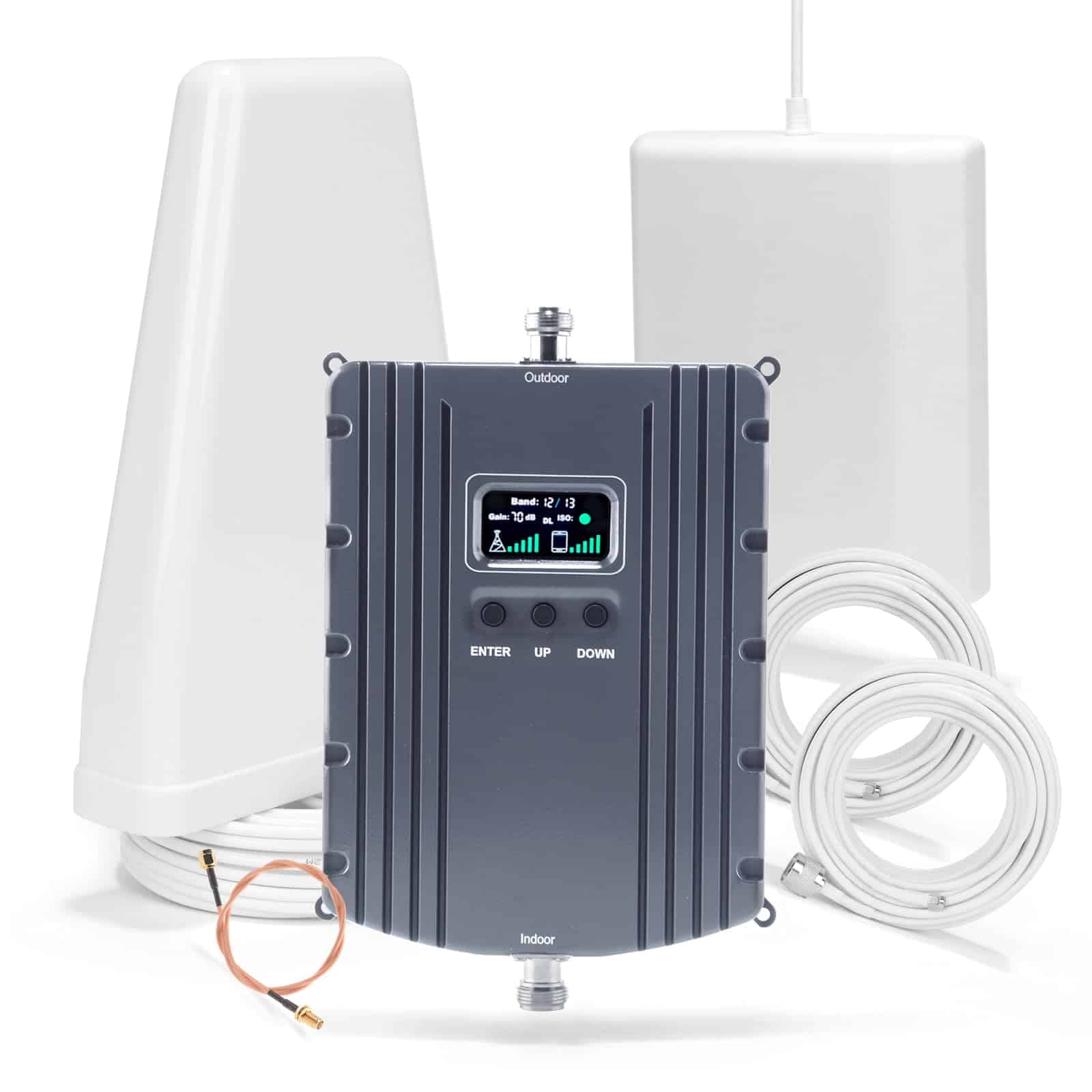
This powerful signal amplifier solves reception problems in homes and offices with its impressive 5500 sq ft coverage and compatibility with all major US carriers.
Pros
- Boosts signals for multiple carriers across numerous bands
- Enhances both 5G and 4G LTE connectivity
- FCC certified for regulatory compliance
Cons
- Effectiveness depends on existing exterior signal strength
- Requires proper antenna separation for optimal performance
- Installation might be challenging for some users
The SNDcellup signal booster addresses a common frustration for many homeowners and small businesses – poor cell reception. This device amplifies weak signals across bands 2/25/4/66/5/12/17/13, making it compatible with all major US carriers. Users experience fewer dropped calls, better voice quality, and faster data speeds in spaces up to 5500 square feet.
Setup involves positioning the outdoor log-periodic antenna to capture existing signals, then installing the indoor panel antenna to distribute the boosted signal throughout your space. The system includes a 49-foot cable for the outdoor component and a 16-foot cable for the indoor antenna. These longer cables provide flexibility when determining the optimal installation locations.
5G compatibility sets this booster apart from older models on the market. The system works with the 5G networks deployed on existing 4G bands through Dynamic Spectrum Sharing (DSS). This future-proofs your investment as carriers continue expanding their 5G coverage. The maximum gain of 70 dB ensures significant signal enhancement in previously problematic areas of your home or office.
Actual coverage varies based on existing signal strength outside your building. With 1-2 bars of exterior signal, expect about 300 square feet of improved coverage. The coverage expands dramatically to 5500 square feet with stronger exterior signals. For best results, maintain approximately 32 feet of separation between the outdoor and indoor antennas to prevent feedback loops.
Buying Guide
Selecting the right signal booster requires understanding your specific needs and technical requirements. This guide will help you navigate the key factors to consider when making a purchase.
Coverage Area
The first consideration should be how much area you need to cover. Signal boosters come with different range capabilities:
| Coverage Type | Approximate Area | Best For |
|---|---|---|
| Small | Up to 2,000 sq ft | Single room or small apartment |
| Medium | 2,000-5,000 sq ft | House or small office |
| Large | 5,000+ sq ft | Commercial building or large home |
Signal Type
Identify which type of signal you need to boost. Some boosters enhance multiple signal types while others specialize in one.
- Cellular boosters: Amplify 3G, 4G LTE, 5G signals
- WiFi boosters: Extend wireless internet coverage
- Radio frequency boosters: Enhance FM/AM reception
Installation Complexity
Consider how much effort you want to put into installation. Some systems require professional setup while others are designed for DIY installation.
Frequency Bands
Check which frequency bands the booster supports. This is crucial for compatibility with your carrier’s network.
Gain (dB)
The gain rating indicates how much a booster amplifies signals. Higher gain provides better performance but may cost more.
Power Requirements
Some boosters need external power sources, while others can work with USB or battery power. This affects placement flexibility.
Certifications
Look for boosters certified by regulatory authorities in your region. These certifications ensure the device won’t interfere with other signals.
Price Range
Budget options start around $50-100 for basic models. Mid-range boosters cost $100-300, while professional-grade systems can exceed $500.
Frequently Asked Questions
Signal boosters offer solutions to many common connectivity problems. Here are answers to some of the most common questions people have when considering these devices.
How do signal boosters improve cellular reception in rural areas?
Signal boosters work by capturing weak cellular signals from the nearest tower using an external antenna. They amplify these signals and redistribute them inside your home or vehicle through an internal antenna.
In rural areas where distance from towers is the main issue, boosters with high-gain external antennas can capture signals from towers up to 30 miles away. This significantly increases signal strength and quality.
Rural users typically benefit most from boosters that operate in the 700 MHz band, which travels farther and penetrates buildings better than higher frequencies.
What are the differences between 4G and 5G signal boosters?
4G boosters amplify signals in frequency bands used by 4G LTE networks (700-2100 MHz). They improve voice calls, text messaging, and 4G data speeds.
5G boosters support higher frequency bands, including sub-6 GHz and sometimes mmWave bands (24-39 GHz). These newer models often maintain backward compatibility with 4G networks.
The price difference is substantial, with 5G boosters typically costing 30-50% more than 4G models. Many 5G boosters offer better gain and coverage area specifications to handle the more demanding requirements of 5G technology.
Can signal boosters interfere with WiFi or other wireless devices?
Most modern signal boosters include technology to prevent interference with other wireless systems. FCC-certified boosters have automatic gain control to prevent network overload.
WiFi operates on different frequency bands (2.4 GHz and 5 GHz) than cellular networks, minimizing direct interference between the two systems. However, poorly installed or uncertified boosters might cause radio frequency noise.
To avoid potential issues, place your signal booster at least 6 feet away from WiFi routers and other wireless equipment. Follow manufacturer guidelines for proper installation and positioning.
What should I consider when choosing a signal booster for my home?
Coverage area should match your needs—boosters range from 1,500 to 7,500 square feet of coverage. Larger homes require more powerful models.
Identify your specific connectivity problems before purchasing. If you mainly experience dropped calls, a voice-optimized booster works well. For slow data, look for models with high download speeds.
Your existing signal strength matters. Measure your current signal in decibel-milliwatts (dBm) using apps like Network Cell Info or SignalCheck. Homes with extremely weak signals (-105 dBm or worse) need more powerful boosters.
Budget is also important, as prices range from $200 for basic models to $1,200+ for whole-home 5G solutions.
Are there any legal considerations when installing signal boosters?
In the United States, the FCC requires all consumer signal boosters to be registered with your mobile carrier. This registration is free and can typically be completed online.
Only FCC-certified boosters are legal to use. These devices have safeguards that prevent network interference and overload.
Some carriers may have specific requirements or restrictions for booster use on their networks. Always check with your carrier before installation.
Commercial buildings face stricter regulations than residential users. Business installations often require professional installation and documentation.
How can I determine if a signal booster is compatible with my mobile carrier?
Check the booster’s specifications for supported frequency bands. Major carriers use specific bands: Verizon (bands 2, 4, 5, 13), AT&T (bands 2, 4, 5, 12, 17), T-Mobile (bands 2, 4, 12, 66, 71).
Look for “carrier-agnostic” or “multi-carrier” boosters if you need support for multiple networks. These devices amplify a wide range of frequencies used by different carriers.
Most reputable manufacturers provide compatibility charts on their websites. These resources list which carriers and services work with each booster model.
Contact your carrier’s customer service for confirmation. They can verify compatibility and provide information about registration requirements.

